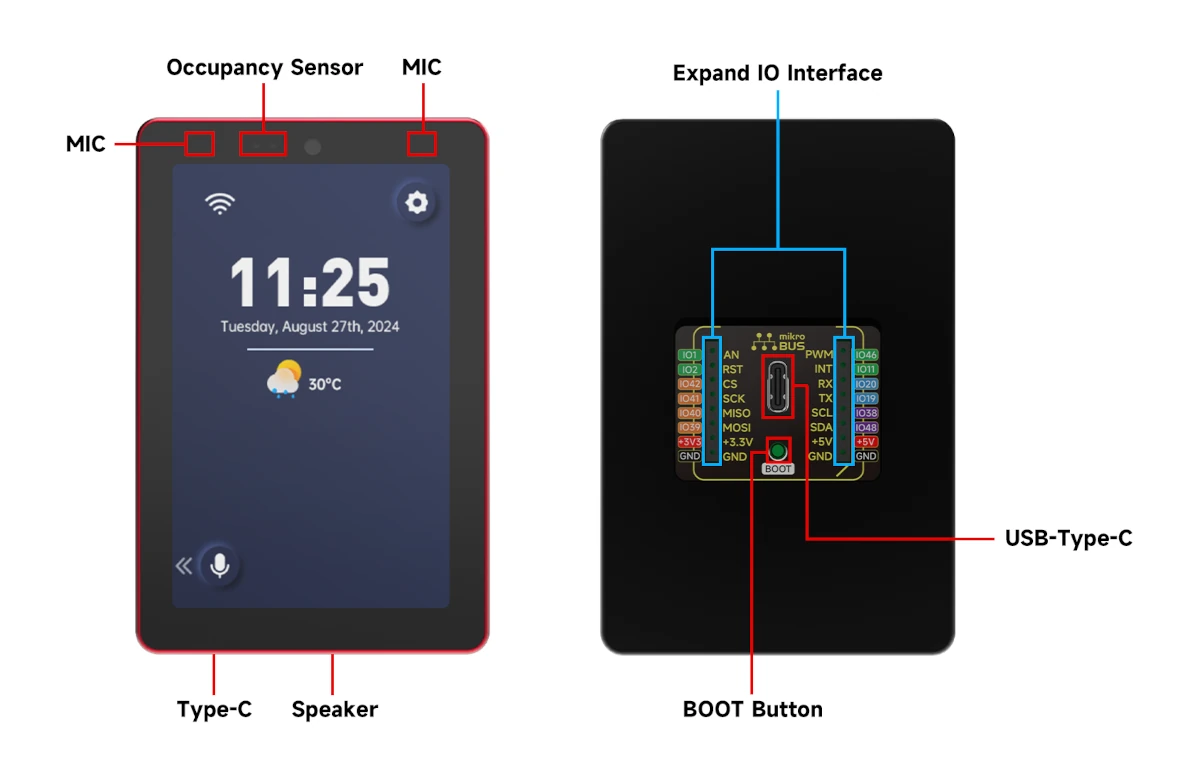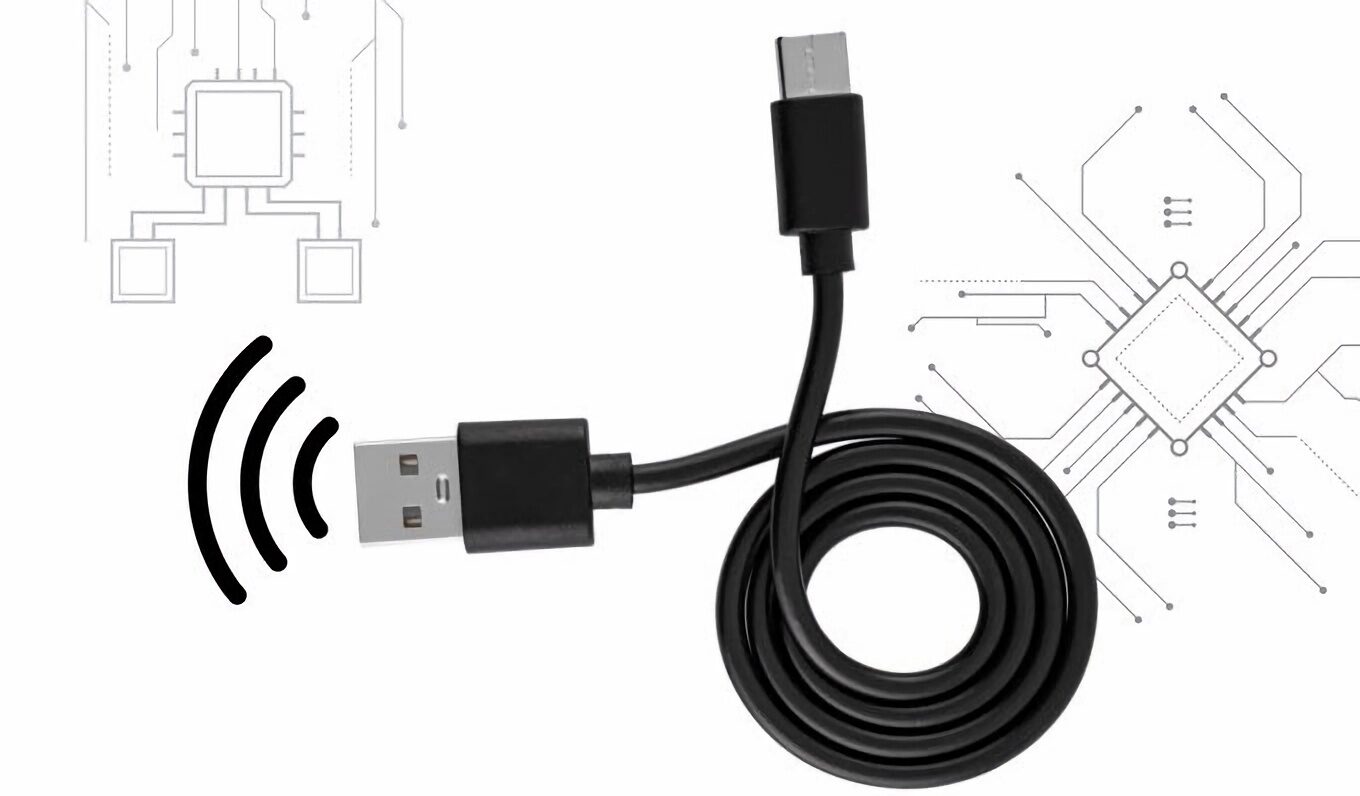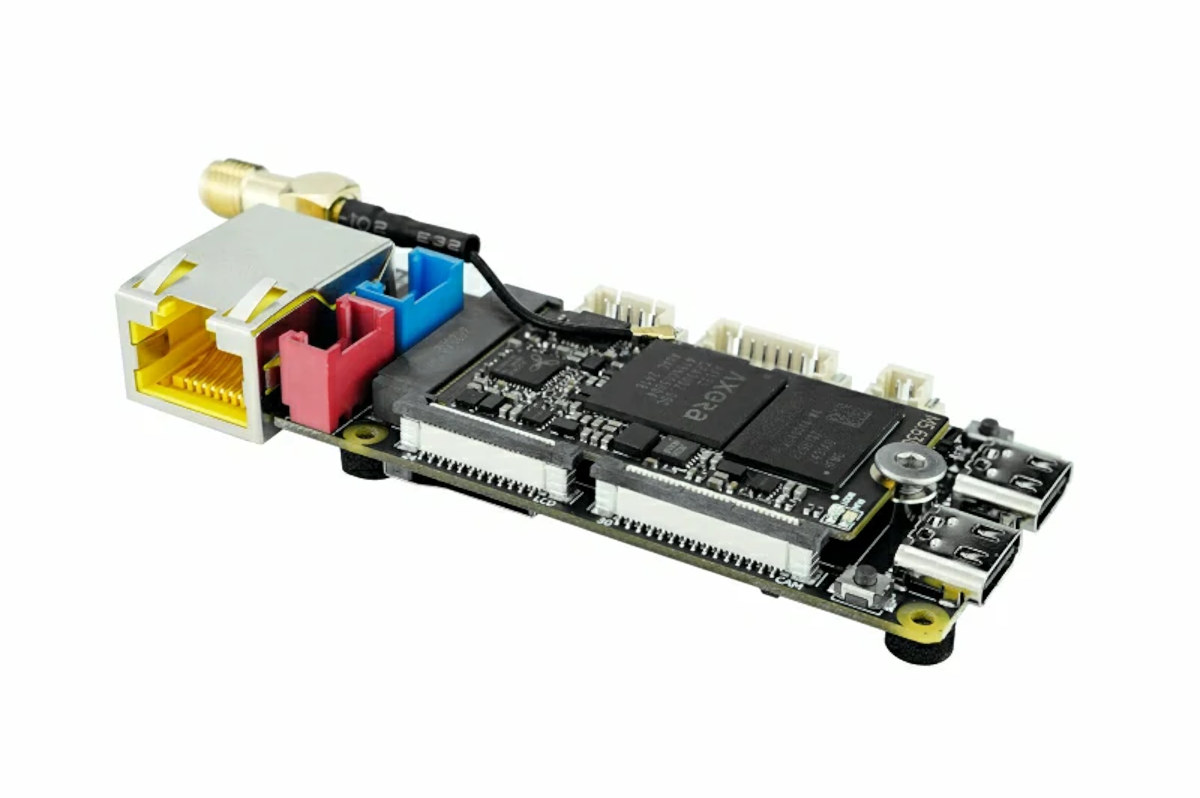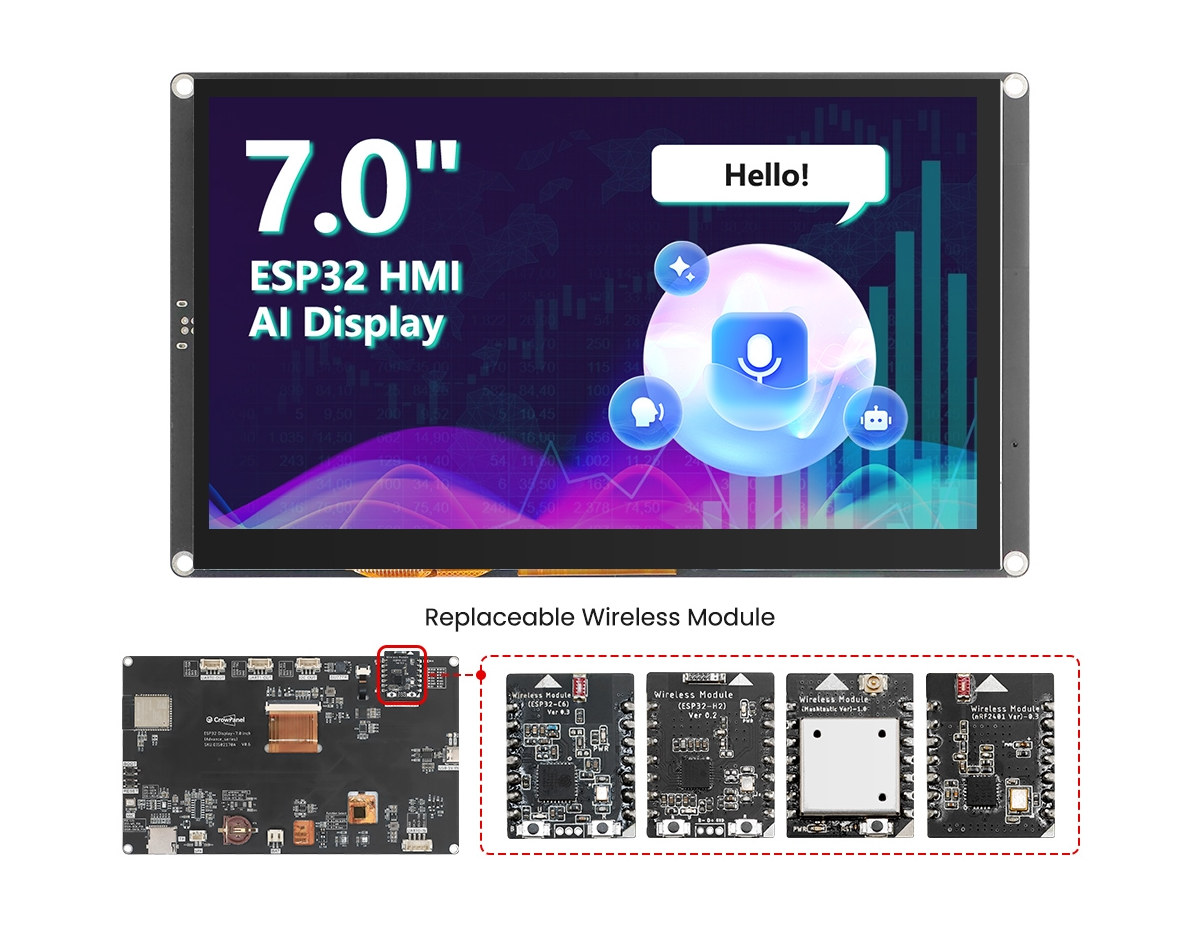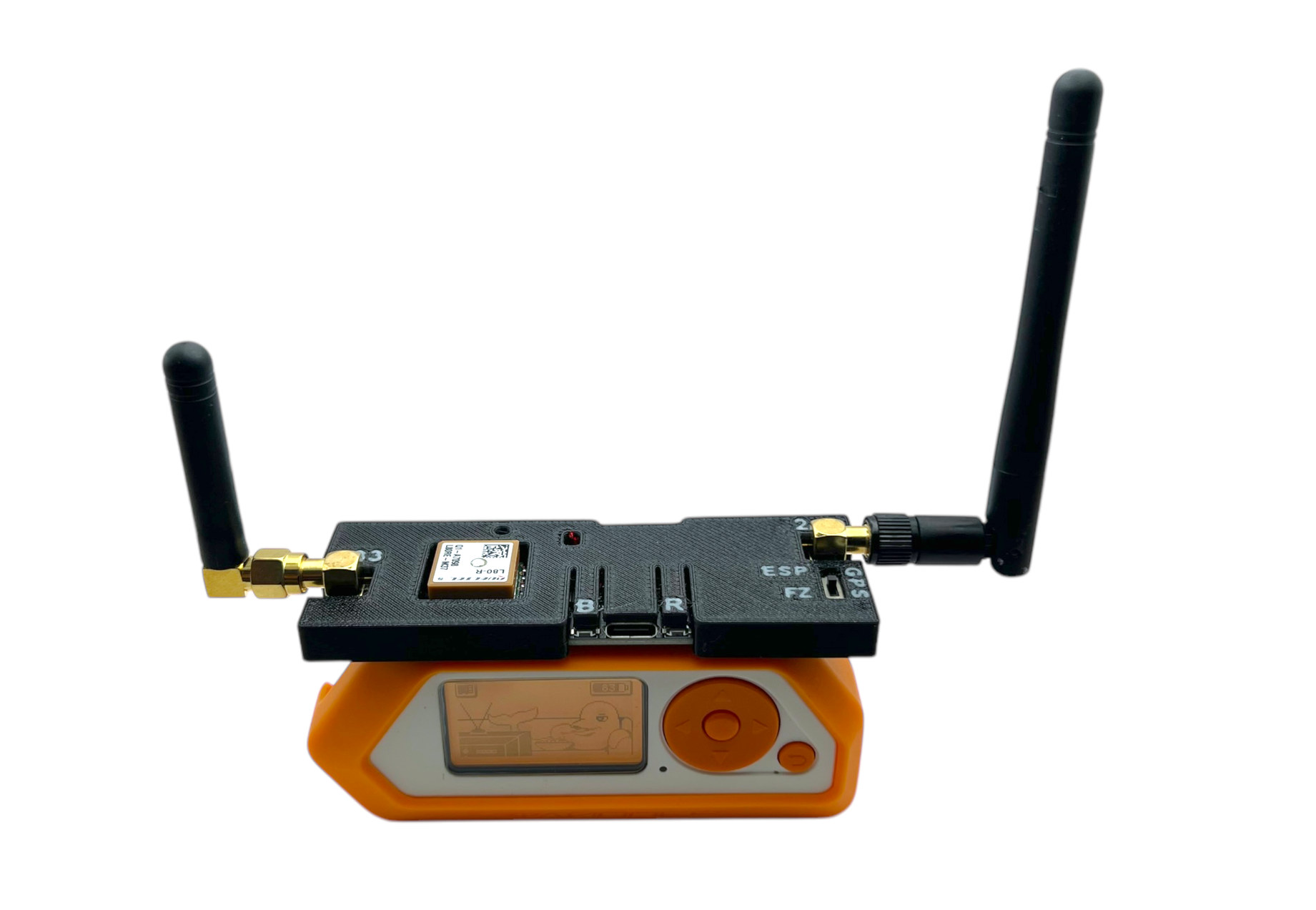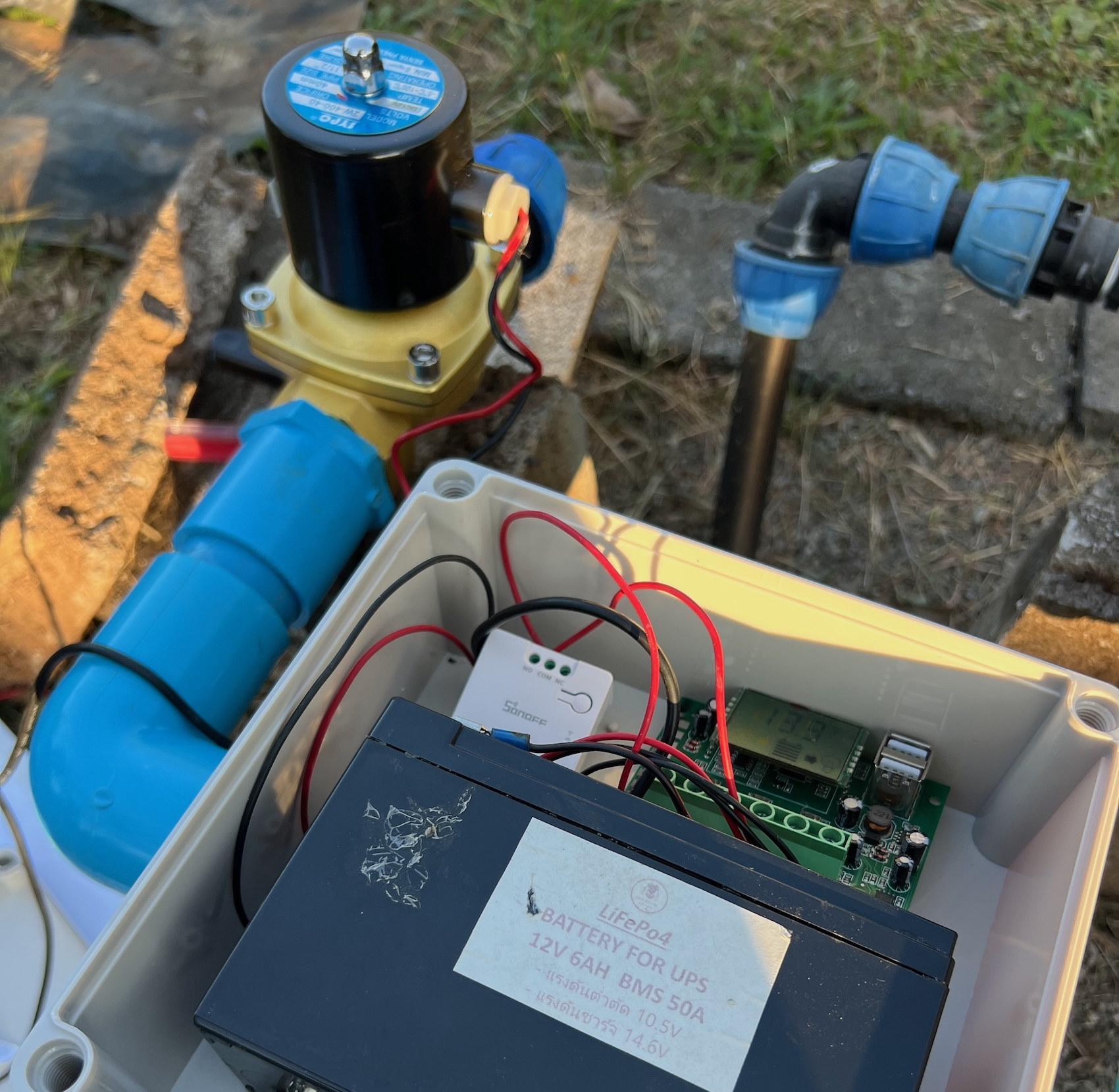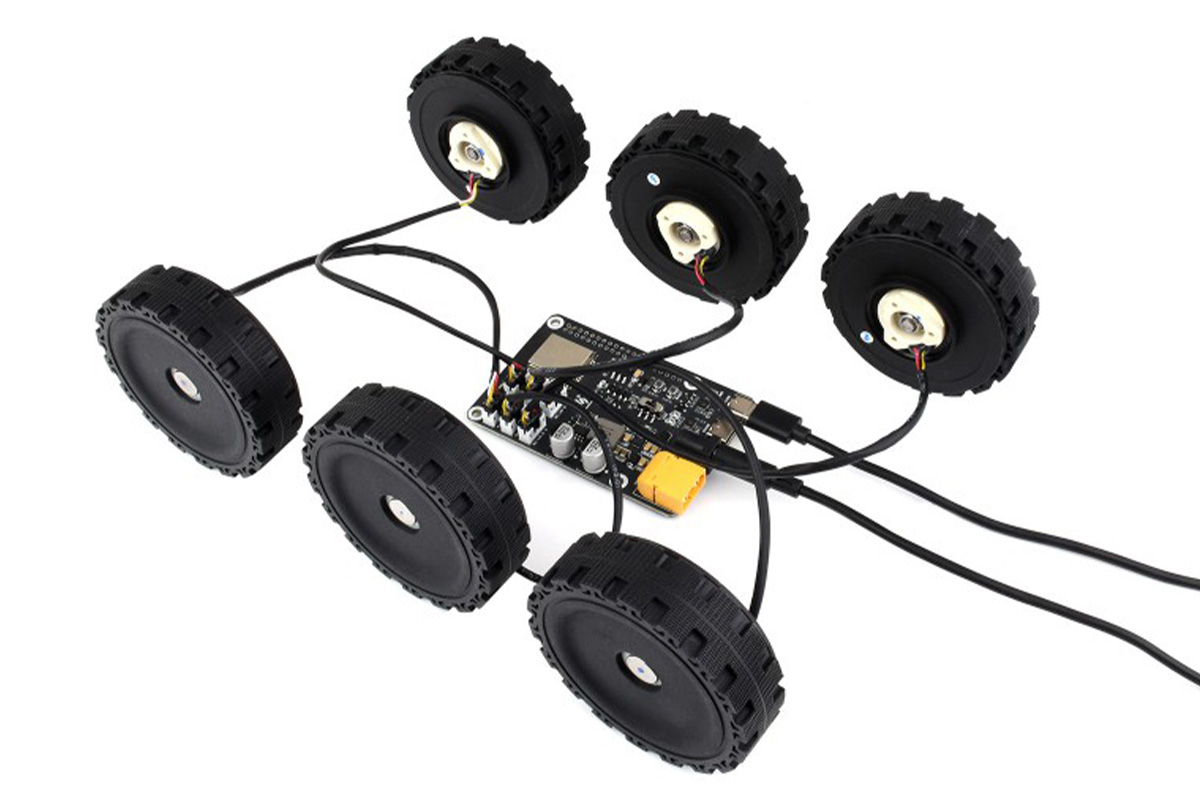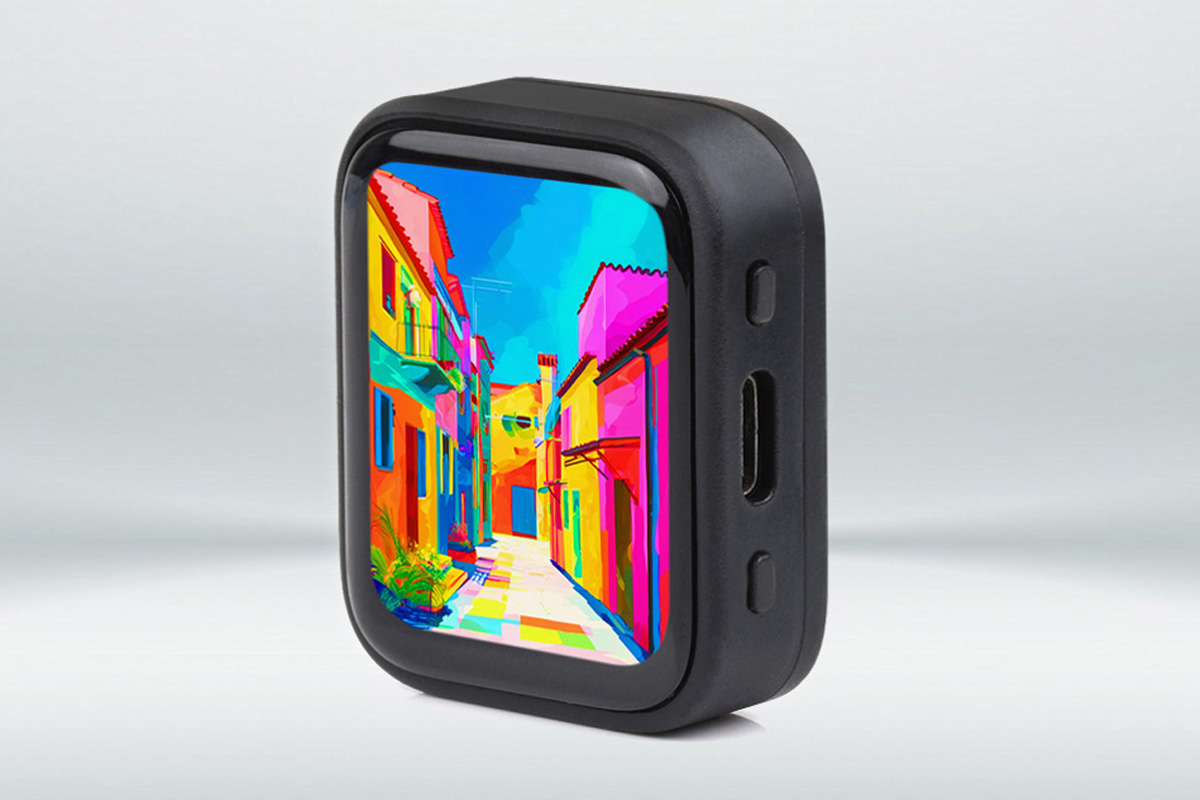The ESP32 Agent Dev Kit is an ESP32-S3-powered voice assistant that offers integrations with popular LLM models such as ChatGPT, Gemini, and Claude. Wireless-Tag says the Dev Kit is suitable for “95% of AIoT applications, from smart home devices to desktop toys, robotics, and instruments” In some ways, it is similar to the SenseCAP Watcher, but it has a larger, non-touch display and dual mic input. It however does not support local language models. It also features a standard MikroBUS interface for expansion. For voice capabilities, the ESP32 Dev Kit integrates two onboard, noise-reducing microphones and a high-fidelity speaker. The built-in infrared laser proximity sensor detects human proximity and movement for “smart interactive experiences”. ESP32 Agent Dev Kit specifications: MCU – ESP32-S3 dual-core Tensilica LX7 microcontroller @ 240MHz, 8MB PSRAM Storage – 16MB flash Display – 3.5-inch Touchscreen, 480×360 resolution Camera – 5MP OmniVision OV5647 camera module, 120° field of […]
HackCable is a wireless-enabled, USB-C keystroke injection cable powered by ESP32 or RP2040 (Crowdfunding)
HackCable is a wireless-enabled USB-C keystroke injection cable described as the “ultimate tool for cybersecurity enthusiasts and ethical hackers.” powered by the ESP32-S3 or the Raspberry Pi RP2040. The ESP32-S3 version is described as the Wi-Fi Version and offers a built-in Wi-Fi hotspot, remote operation, and master-slave configuration for multiple cables. The Normal Version is a cheaper variant powered by the Raspberry Pi RP2040 microcontroller and built for focused, offline tasks where wireless control isn’t needed. The HackCable promises hardware keylogging, remote control, and master-slave synchronization for multiple cables. We have covered other USB penetration testing tools like the Diabolic Drive and Pendrive S3, but those were USB dongles while the HackCable looks like a standard USB Type-A to USB Type-C cable. There is very little information about the product, other than the microcontrollers that power it. It is likely running SuperWiFiDuck or some other USB rubber ducky program. It […]
M5Stack LLM630 Compute Kit features Axera AX630C Edge AI SoC for on-device LLM and computer vision processing
M5Stack LLM630 Compute Kit is an Edge AI development platform powered by Axera Tech AX630C AI SoC with a 3.2 TOPS NPU designed to run computer vision (CV) and large language model (LLM) tasks at the edge, in other words, on the device itself without access to the cloud. The LLM630 Compute Kit is also equipped with 4GB LPDDR4 and 32GB eMMC flash and supports both wired and wireless connectivity thanks to a JL2101-N040C Gigabit Ethernet chip and an ESP32-C6 module for 2.4GHz WiFi 6 connectivity. You can also connect a display and a camera through MIPI DSI and CSI connectors. M5Stack LLM630 Compute Kit specifications: SoC – Axera Tech (Aixin in China) AX630C CPU – Dual-core Arm Cortex-A53 @ 1.2 GHz; 32KB I-Cache, 32KB D-Cache, 256KB L2 Cache NPU – 12.8 TOPS @ INT4 (max), 3.2 TOPS @ INT8 ISP – 4K @ 30fps Video – Encoding: 4K; Decoding:1080p […]
CrowPanel Advance: ESP32-S3 displays with replaceable WiFi 6, Thread, Zigbee, LoRa, and 2.4GHz wireless modules
Elecrow’s CrowPanel Advance is a family of 2.8-inch to 7-inch ESP32-S3 WiFi and BLE displays that supports replaceable modules for Thread/Zigbee/Matter, WiFi 6, 2.4GHz, and LoRa (Meshtastic) connectivity. Those are updates of the CrowPanel (Basic) displays introduced last year. They feature an ESP32-S3-WROOM-1-N16R8 module soldered on the back plus headers taking ESP32-H2, ESP32-C6, SX1262 LoRa transceiver, or nRF2401 2.4GHz wireless MCU. CrowPanel Advance 7-inch specifications: Wireless Module – ESP32-S3-WROOM-1-N16R8 SoC – ESP32-S3 CPU – Dual-core LX7 processor with up to 240MHz Memory – 512KB SRAM, 8MP PSRAM Storage – 384KH ROM Wireless – WiFi 4 and Bluetooth 5.0 with BLE Storage – 16MB flash PCB antenna Storage – MicroSD card slot Display 7.0-inch IPS capacitive touchscreen display with 800×480 resolution (SC7277 driver) Viewing Angle: 178° Brightness: 400 cd/m²(Typ.) Color Depth – 16-bit Active Area – 156 x 87mm Audio Built-in microphone Speaker connector Wireless Expansion ESP32-H2 module with 802.15.4 radio […]
FlipMods Combo is a 3-in-1 Flipper Zero expansion module with ESP32, GPS, and CC1101 modules
Sacred Labs’ FlipMods Combo is a 3-in-1 expansion module for the Flipper Zero that combines an ESP32 WiFi and Bluetooth SoC, Texas Instruments CC1101 Sub-GHz wireless microcontroller, and an unnamed GPS module. The expansion module is housed in a neat 3D-printed case and features a built-in GPS antenna, external WiFI/Bluetooth & Sub-Ghz antennas, as well as a switch to send the GPS data to the ESP32 chip or the Flipper Zero. The ESP32 module is preloaded with the Marauder firmware also used in the ESP32 Marauder Pocket Unit and Mayhem v2 for Flipper Zero for penetration testing with Wi-Fi scanning, de-authentication attacks, packet sniffing, and more. FlipMods Combo specifications: Wireless modules ESP32-WROOM-32UE for WiFi and Bluetooth; external SMA antenna (long) Texas Instruments CC1011 for 315, 433, 868, and 915MHz ISM bands; external SMA antenna (short) GPS module with internal antenna Storage – MicroSD card slot up to 32GB USB – […]
SONOFF MINI-D Review – A Matter-enabled dry contact WiFi switch tested with eWeLink, Home Assistant, and Apple Home
SONOFF sent us a sample of the MINI-D Wi-Fi smart switch with a dry contact design for review. If you’re familiar with the larger SONOFF 4CH Pro model, which features four channels, the MINI-D operates similarly but is smaller in size and comes with the latest software features. The principle of a dry contact is that the relay contacts are not directly connected to the device’s power supply circuit. Instead, the contacts are isolated and require an external power source to supply power to the load. Make it flexible to use the SONOFF Mini-D in various scenarios such as controlling garage doors, thermostats, or high-current electrical devices through a contactor, like water pumps. It can also manage low-power DC devices such as solenoid valves or small electric motors (<8W). Because the power supplied to the MINI-D and the power passed through its relay can come from different sources, it offers […]
ESP32-based Waveshare DDSM Driver HAT (B) for Raspberry Pi supports DDSM400 hub motors
Waveshare has recently launched DDSM Driver HAT (B), a compact Raspberry Pi DDSM (Direct Drive Servo Motor) motor driver designed specifically to drive the DDSM400 hub motors. This board is built around an ESP32 MCU and supports wired (USB and UART) and wireless (2.4GHz WiFi) communication. Additionally, the board features a physical toggle switch, which lets it choose between the ESP32 control or USB control modes. On ESP32 control mode you can control the device through a built-in web application. In the USB control mode, the motor driver can be controlled via USB from a host computer sending JSON commands. An XT60 connector is used to power the board, and programming is done through a USB-C port that connects to the ESP32. The board is suitable for robotics projects, especially for mobile robots in 6×6 or 4×4 configurations. Waveshare DDSM Driver HAT (B) specifications: Wireless MCU – Espressif Systems ESP32-WROOM-32E ESP32 […]
Fully enclosed ESP32-S3 board features 1.8-inch AMOLED, microphone & speaker for AI audio applications
Waveshare ESP32-S3-Touch-AMOLED-1.8 is an ESP32-S3 development board with an AMOLED display and AI audio support fully housed in a plastic enclosure. The most interesting feature of this devkit is its 1.8-inch AMOLED display with a 100000:1 contrast ratio and a wide 178° viewing angle, plus support for AI speech using its built-in microphone and speaker, and a built-in battery for IoT and AI applications. Other features include a QMI8658 6-axis IMU for motion detection, a PCF85063 RTC for time, and an ES8311 audio codec for high-quality audio. The ESP32-S3 provides Bluetooth and Wi-Fi connectivity and the board also features a USB-C port for power and programming. The AXP2101 power management IC enables battery charging and optimization, while GPIO, I2C, and UART pads allow expansion. Waveshare ESP32-S3-Touch-AMOLED-1.8 specifications Wireless MCU – Espressif Systems ESP32-S3R8 CPU – Dual-core Tensilica LX7 @ up to 240 MHz with vector instructions for AI acceleration. Memory – […]


